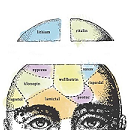In The Conversation, Cardiff University psychiatrist Stefanie Linden discusses her own research, reviewing old records of World War I veterans and their experiences of shell shock. “My research focuses on the exact symptoms of traumatised soldiers,” writes Linden, “but also explores their personal histories, the events leading up to their breakdown, their journey through the medical system, and the reactions of doctors to this new challenge.”
“Soldiers with shell shock showed a wide variety of symptoms, ranging from deafness, bizarre gaits, violent shaking and paralyses to anxiety, depression, transient psychoses (with hallucinations and delusions) and flashbacks and nightmares which are classic displays of PTSD (post-traumatic stress disorder),” writes Linden. “The breadth of these clinical presentations is surprising because it is generally assumed that PTSD mainly arose in later wars.”
“The study of the Queen Square records dispels widely held beliefs about the outcomes of shell-shock patients,” adds Linden. “These include that shell shock was chronic and virtually untreatable (many patients recovered) and that patients were regularly classified as malingerers and sent back to the frontline (very few were).”
World War I records reveal myths and realities of soldiers with ‘shell shock’ (The Conversation, November 20, 2014)











